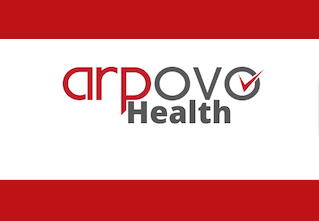What Is Bacteriostatic (“BAC”) Water?
Bacteriostatic water, commonly called “BAC water,” is a sterile water preparation designed for injection. It contains a small amount of benzyl alcohol (usually 0.9%) as a preservative, which inhibits bacterial growth and allows the water to be safely used multiple times from the same vial. Because of this preservative, it is labeled as “bacteriostatic,” meaning it prevents bacteria from multiplying, although it does not kill bacteria already present.
BAC water is classified as non-pyrogenic, meaning it doesn’t cause fever when injected properly. It’s important to note that bacteriostatic water is not intended for direct intravenous infusion on its own. Instead, it serves as a diluent—a sterile liquid used to dissolve or dilute other medications or compounds before injection.
Composition and Key Features
The main ingredients of bacteriostatic water are sterile water and benzyl alcohol. The benzyl alcohol acts as a preservative, giving the solution a longer shelf life and making it suitable for multiple withdrawals. Because of this feature, it’s often supplied in multi-dose vials. However, it must be handled under aseptic conditions to avoid contamination.
Typical Uses in Pharmaceuticals and Research
Bacteriostatic water is widely used to reconstitute powdered medications, especially those that come in lyophilized (freeze-dried) form. It’s also common in research environments for preparing peptides, hormones, or other compounds. The preservative allows for multiple extractions from one vial, which is both cost-effective and practical in lab or clinical settings.
What Is a Reconstitution Solution (Diluent)?
A reconstitution solution refers to any sterile liquid used to dissolve or mix a powdered medication to make it ready for injection or use. Many injectable drugs are manufactured in powder form because they remain more stable that way. Before administration, the powder must be mixed with an appropriate liquid known as a diluent or solvent.
Definition and Process of Reconstitution
Reconstitution is the process of adding a sterile diluent to a dry drug powder to create a liquid solution with a specific concentration. The process ensures the medication is safe and effective for use. Using the wrong diluent can reduce the drug’s potency, cause side effects, or even make the preparation unsafe.
Types of Diluents and Their Differences
Common types of reconstitution solutions include:
-
Sterile Water for Injection: Preservative-free and intended for single use.
-
Normal Saline (0.9% Sodium Chloride): Used when specific drugs require isotonicity.
-
Bacteriostatic Water: Contains benzyl alcohol for multi-use applications.
Each type is selected based on drug compatibility and manufacturer instructions. Some drugs may react with preservatives, making preservative-free diluents the only safe option.
BAC Water vs Reconstitution Solution – Key Differences
Preservatives, Multi-Use vs Single-Use, and Safety
The main difference between BAC water and other reconstitution solutions lies in the presence of preservatives. BAC water contains benzyl alcohol, which makes it bacteriostatic and suitable for multiple uses. Other diluents, such as sterile water or saline, are preservative-free and intended for single-use only.
BAC water can be stored and used for up to 28 days after opening if proper sterile technique is followed. In contrast, sterile water or saline should be discarded immediately after use to avoid contamination.
Compatibility and Storage Differences
Not all medications are compatible with BAC water. Some compounds can react with benzyl alcohol, reducing their effectiveness or causing instability. Additionally, BAC water should never be used for neonates or infants because benzyl alcohol can be toxic at certain concentrations.
Proper storage is also essential. Bacteriostatic water should be kept at room temperature, away from light, and clearly labeled with the opening date. Single-use reconstitution solutions, once opened, must be used immediately and disposed of to maintain sterility.
When to Use BAC Water vs Other Reconstitution Solutions
Medical and Clinical Use
In medical settings, the choice of diluent is based on the manufacturer’s instructions. For example, some antibiotics, hormones, and injectable medications specify whether to use sterile water, saline, or bacteriostatic water. BAC water is typically chosen when multiple doses need to be drawn from the same vial and when the preservative won’t interfere with the medication.
However, for neonates or sensitive drugs, sterile water without preservatives is preferred. Healthcare professionals always follow specific guidelines to ensure the chosen diluent maintains both drug safety and effectiveness.
Research and Laboratory Applications
In research and peptide preparation, BAC water is commonly used as a reconstitution solution for lyophilized peptides and compounds. It allows multiple draws from a single vial, minimizing waste and reducing contamination risks when handled correctly. Researchers appreciate the extended usability and stability it offers, especially in controlled laboratory conditions.
Practical Tips and Precautions
Aseptic Technique and Handling
To safely use BAC water or any reconstitution solution, always:
-
Clean the vial’s rubber stopper with an alcohol swab before and after use.
-
Use a new sterile syringe and needle for each draw.
-
Label the vial with the date and time of opening.
-
Discard after 28 days (for BAC water) or after single use (for sterile water).
-
Store vials in a clean, cool, and dry environment.
Contraindications and Safety Warnings
BAC water should never be used for neonates, infants, or during pregnancy without medical supervision due to the risk of benzyl alcohol toxicity. Always check compatibility with the medication before mixing. Using the wrong reconstitution solution can cause improper drug concentration, contamination, or reduced therapeutic effect.
Summary and Comparison Table
| Feature | BAC (Bacteriostatic) Water | Generic Reconstitution Solution (Sterile) |
|---|---|---|
| Preservative | Yes (benzyl alcohol) | No preservative |
| Multi-use | Yes (up to 28 days if sterile) | Single use only |
| Suitable for neonates | No | Yes (if preservative-free) |
| Common usage | Peptides, lab prep, multi-dose drugs | Single-dose medications |
| Risk if misused | Preservative toxicity, contamination | Drug instability, contamination |
Frequently Asked Questions
Q1. What does “reconstitution solution” mean?
It’s a sterile liquid used to dissolve powdered medications before injection, ensuring the right concentration for effective dosing.
Q2. Can I use BAC water instead of sterile water for injections?
Only if the manufacturer allows it. Some drugs may react with benzyl alcohol or require preservative-free diluents.
Q3. How long can bacteriostatic water be used after opening?
Typically up to 28 days, provided it’s stored properly and handled using sterile techniques.
Q4. Why is sterile water single-use only?
Because it lacks preservatives, once opened, it’s prone to contamination and must be discarded immediately after use.
Q5. Is BAC water safe for infants or neonates?
No. Benzyl alcohol in BAC water can be harmful to infants and should never be used for pediatric injections.
Q6. Why is BAC water popular for peptide research?
Its preservative allows multiple sterile draws, making it cost-effective and practical for repeated peptide reconstitution in labs.
Q7. What happens if I use the wrong diluent?
It may cause drug instability, reduced potency, or contamination, potentially making the medication unsafe to use.



